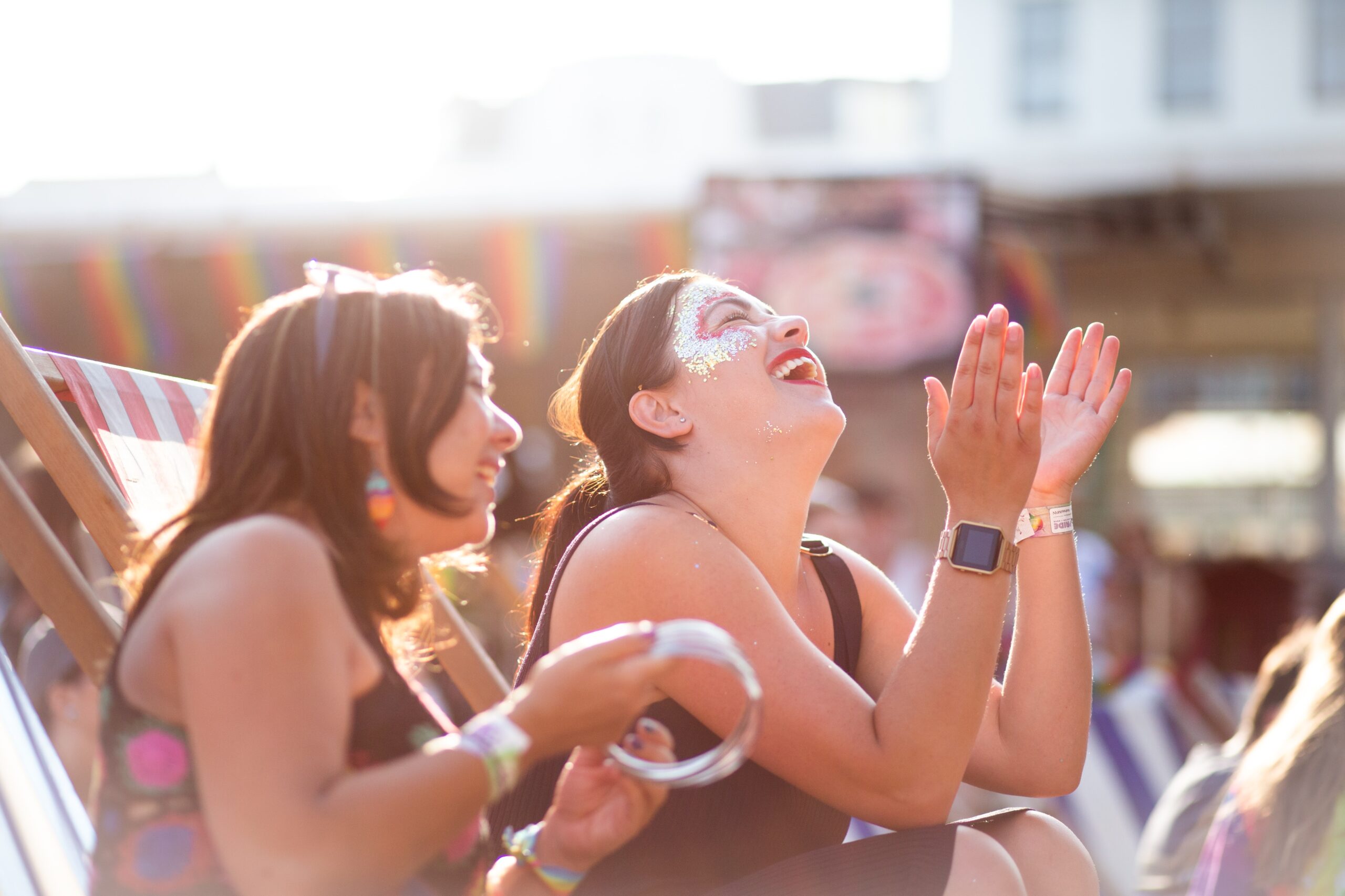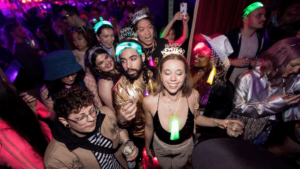It’s every event organizer’s worst nightmare: Arriving at a half-empty venue on event day after spending months of hard work planning the perfect event. That’s enough to keep anyone up at night, right?
Well, don’t worry, because we’re here to make sure that never happens to you.
Here at Eventbrite, we help event organizers create, plan, and run 5 million amazing events per year, so we know a thing or two about getting people through the door. That’s why we’ve created this guide on how to increase event attendance.
Read on to get expert tips, find out how to predict event attendance, and how you can supercharge your event promotion and sell out your events using pro tools.
16 ways to increase event attendance
2. Create multiple ticket options
4. Build your event promotion strategy on hard numbers
5. Optimize your event marketing strategies as your campaigns progress
6. Include an “Add to Calendar” link in your confirmation emails
7. Tease your followers on social
8. Create actionable pre-event surveys
9. Generate social proof with influencer takeovers
10. Give followers all the facts
12. Set up automated reminders
13. Create geofilters for your event
14. Prevent bottlenecks at your venue
`16. Livestream from your event to create a sense of urgency

What percentage of invitees attend an event?
This is a good time to be an event organizer. Ticket sales for both in-person events and online events have climbed steadily in 2024 across several different verticals — including music, comedy, sports, and theater events.
That being said, we all know that ticket sales don’t always translate into attendance. So, how many of your ticket holders will actually show up on the big day?
There are many variables that will affect your attendance numbers, including:
- Event type
- Event venue accessibility
- Industry
- Weather
- Scheduling conflicts
- Event line-up
- Cost of attendance
- Marketing and social media engagement
- Existing customer base
But as a ballpark, expect an average attendance rate of 65% for in-person events. If you’re charging for event tickets, this will be more like 70–90%. But if your event is free, expect a turnout of closer to 50%.
Running a corporate event? You’ll be glad to hear turnout rates are way higher at around 84%. Meanwhile, attendance rates at virtual events typically hover at around 55%.

How to improve attendance at your next event: 16 proven strategies
Now that we’ve covered average event attendance rates, let’s talk about how you can beat them. Here are 16 of our favorite strategies proven to convert leads and pack the house at your next event:
1. Announce new events ASAP
First thing’s first: you need to lock down your event dates and announce them to the world ASAP.
Booking dates several months in advance ensures you can to secure your ideal venue and line-up so that your event is too good to pass up.
But it’s also important because people are busy, and calendars fill up fast. Giving your ideal attendees as much notice as possible means they can pencil your event in, preventing any double bookings and increasing the odds they’ll show up.
2. Create multiple ticket options
People love flexibility. By introducing a range of ticket types for your upcoming event, potential event attendees can pick which elements of your event they want to attend.
VIP event experiences are particularly hot right now. Attendance at VIP events has grown 18% in the last year — and if you’re creating your event listing with Eventbrite, setting up multiple ticketing tiers is fast and simple.
Here’s how it works:
3. Offer early-bird discounts
Early-bird discounts can get sales moving early on by building a financial incentive to buy tickets fast. Just remember to build on that sense of urgency by setting a discount deadline.
This is also a great way to build your list of leads for future events. By offering early-bird discount codes to email subscribers, you can increase the size of your captive audience for successful event marketing.
Again, working with Eventbrite pays off. Not only can you create multiple ticket types in minutes, but you can also set up multiple discount codes in just a few clicks:
To see how it’s done in practice, take a look at Good Mood Comedy. To kick-start sales for their East Village show in October, the team offered an early-bird two-for-one discount that was simply too good to ignore.
4. Build your event promotion strategy on hard numbers
Advertising can be expensive. The average cost-per-click (CPC) rate in the entertainment sector starts at $1.72 — and if you’re planning big events, your marketing channel spend can add up fast.
Maximize the impact of your event marketing spend by looking at past campaign analytics and sales figures. They’ll tell you where most of your sales leads came from in the past so you can focus your attention on these platforms and markets.
That means you’re talking to the right people — which will improve your chances of getting them to your event.
Need help controlling multiple ad campaigns? Eventbrite might be the answer you’re looking for. Its built-in marketing tools let you build a target audience based on your budget, area, and their interests to ensure you reach the right people in the right places.
Here’s how Eventbrite Ads can help you with that:
5. Optimize your event marketing strategies as your campaigns progress
Try using real-time analytics to monitor the performance of your organic social media posts’ performance, advertisements, and promotional emails.
You can then turn those results into actionable improvements. For example, low open rates mean you might want to change email send times — while lower click rates on Instagram posts might indicate you should reduce copy on posts, increase video lengths, or change target audience parameters.
That’s another department Eventbrite can help you with. With our A/B testing capabilities and AI-powered ad recommendations you can automatically adjust event content based on your marketing goals.
Start boosting your event marketing campaigns.

6. Include an “Add to Calendar” link in your confirmation emails
Another easy win is to customize your checkout confirmation emails to include different “add to calendar” links.
By clicking on the links, your ticket holders can instantly add the event to their personal calendar app — which will then send them reminders to attend your event before and on the day.
Make sure to include multiple options like Google Calendar and Apple iCloud. On Google Calendar, the process is as simple as creating an event, hitting “Invite via link”, and then copying the link to share in your emails.
7. Tease your followers on social
Another great strategy to maximize attendance is to tease followers on social media platforms with exciting event details. This builds a sense of FOMO (fear of missing out) around your event and convinces more people they need to attend.
For example, you could tease your event line-up or keynote speakers over several days, reveal key details about your event as a live stream, or create quizzes or contests to engage users while building a sense of community around your future events.
8. Create actionable pre-event and post-event surveys
Use pre-event surveys and follow-up surveys to better understand what your ideal audience wants.
You can ask past attendees what they liked and didn’t like about previous events and use the results to adapt your next event as needed. For example, you might use the attendee feedback to change your speaker lineup, timings, branding, location, or catering options.
By giving people what they want (and showing them that you listen), you’re giving potential attendees more reasons to show up.
9. Generate social proof with influencer takeovers
Influencers can lend credibility to your event and drastically expand your organic reach. So, why not try a social media takeover?
Takeovers in the run-up to your event build a sense of excitement and remind followers and ticket holders of what’s coming up. They also add personality and a fresh voice to your event’s identity, which could sway followers who are on the fence.
Consider mutually beneficial collaborations to save on marketing (like free posts in exchange for VIP tickets to the event). And when looking for influencers, focus your search on micro-influencers. They’re generally more accessible and are ideal for community and regional events.
10. Give followers all the facts
Planning and logistics are often deciding factors for event attendance. So make sure you give ticket holders all the key information they need prior to your event.
Start by creating an event page or FAQ page on your website including:
- How to get to the event venue
- Maps of the area and venue
- Links to nearby accommodation
- Links to nearby restaurants for before or after the event
Make sure you promote this page on your social channels and send to registrants via email so that everybody gets a chance to see it.
11. Keep your audience warm with emails
Pre-event communication tools are essential to boost conversion. Warmer emails keep your event front of mind — which is important if people are registering for the event months in advance.
They’re a great way to keep ticket holders engaged by revealing useful info like your FAQs page via email in the run-up to your event. But you can also make your emails fun and engaging by including imagery and video of event prep, quizzes, and pre-event surveys.
If you’ve partnered with Eventbrite, keeping in touch with event attendees is super easy. You can even leverage our in-built email marketing tool or use our integration with Mailchimp to create slick, automated email tracks to create different journeys for different ticket holders.
12. Set up automated reminders
Don’t just automate your warmer emails. Make sure you’re setting up reminders before the event to prompt your event guests.
For example, Eventbrite’s email dashboard lets you set up automated reminders 48 hours before your event — which means you don’t have to worry about remembering to remind followers.
If you have SMS permission, send reminder texts to event participants a couple of hours beforehand. Make sure you include key info like how to get to the event space, traffic updates, teasers, and anything else that could make it easier for ticket holders to get over the finish line.
13. Create geofilters for your event
Geofilters on platforms like Snapchat are a fun and relatively simple way to engage with guests on social and encourage them to share your event organically.
Geofilters give your guests the chance to promote your event to their followers (improving your chance of future ticket sales). But they also show up on a person’s socials based on location — which can help you capture the attention of people who are already in the area.
Fortunately, you don’t need to be a tech whiz or graphic artist to create geofilters. Here’s one example we absolutely love:
14. Prevent bottlenecks at your venue
Nobody likes to wait in a long line — and if your entry points get too backed up, some of your potential attendees might end up bailing.
That’s why you should use powerful tools to promote quick entry and maintain a smooth guest experience.
For example, the Eventbrite Organizer App enables you to scan your guests in at super speeds. It’s intuitive, and you don’t have to invest in overpriced tech. Every ticket you sell gets a QR code that you can scan straight from your guests’ phones using your own. It’s that easy.
15. Sell tickets at the door
Some people are chancers, so you need to be ready to catch stragglers by selling tickets at your venue.
If there are spaces available, encourage existing ticket holders to bring a friend. Just make sure you’re utilizing a simple POS tool that can help you sell tickets at the gate without creating bottlenecks.
This is another reason event professionals the Eventbrite Organizer App. Its “Tap to pay” function enables you to accept payments for tickets (or event merch) before and during your event.
Here’s how it works:
16. Livestream from your event to create a sense of urgency
Livestreams are an awesome way to quickly show off the sights and sounds at your event — potentially motivating followers to drop what they’re doing and join you at the venue right now.
Catch video of guests queuing up, caterers cooking, or entertainers warming up. That should stop serial scrollers and create some FOMO they can act on.

How to get people to come to your event: FAQs
If you try some of the strategies we’ve just covered, you’re definitely going to improve your odds of increasing event attendance.
But if you’ve still got questions about packing the house, don’t stress. We’ve got the answers:
How to predict event attendance
The best way to predict event attendance is to utilize reporting data from previous attendees to develop an average attendance rate. You can also conduct pre-event surveys to get feedback from attendees.
How can I increase attendance at events?
To increase event registrations and attendance, know your target audience and build your event around them. It’s also important to optimize your event promotion strategy to maximize your chances of reaching potential attendees and enhance event communications before your event to keep leads warm.
How do you track attendance at a large event?
The most effective tool to track attendance is event management software that offers real-time updates. For example, the Eventbrite Organizer App enables you to see how many attendees have checked in, where they’ve checked in, and what time.
What makes people want to attend an event?
In this year’s TRNDS survey, 61% of people told us they want to try new things in 2024.Think about how you can satisfy that demand by creating a unique and memorable attendee experience at your event that will enable guests to try something new
Let’s boost your event numbers
Remember: you don’t have to use all these strategies simultaneously to increase attendance at your events.
The methods you choose will depend a lot on your style, your audience, and the type of event you’re running — and there will be a little trial and error involved. But we’re here to support you every step of the way.
With Eventbrite, you can create slick, AI-powered ads, optimize and target your event advertising, set up automated reminders, and check in your guests at light speed. Everything we do is designed to help you sell out your event.





